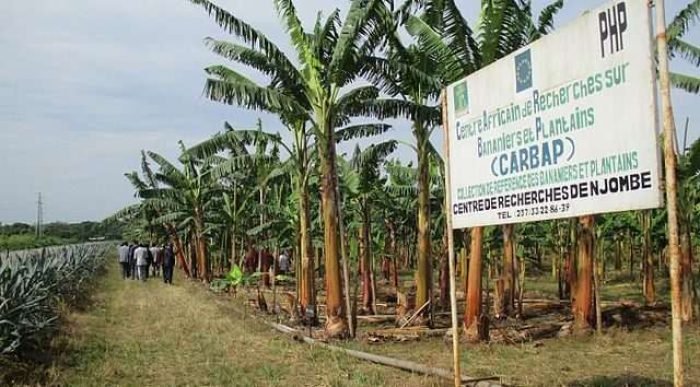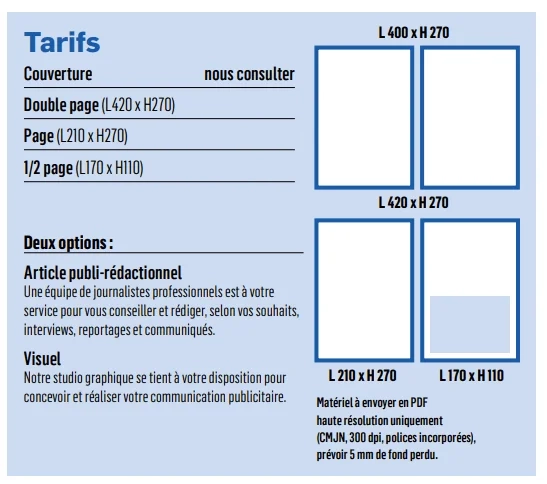Space not available
Reserve this advertising space
Selected ad format
The file format is not recognized
Click here for
send an announcement
Click here to transmit
an announcement
Drag and drop here
or
send an announcement
Send the ad up to 8 days after payment
A link will be sent to you by advertising@via-agency.fr
Bottom reference
Reserved space
Announcement transmitted
Reference

Cash crops, mainly intended for export, play a major role in the geographical, geopolitical, social and economic construction of territories.
Space not available
Reserve this advertising space
Selected ad format
The file format is not recognized
Click here for
send an announcement
Click here to transmit
an announcement
Drag and drop here
or
send an announcement
Send the ad up to 8 days after payment
A link will be sent to you by advertising@via-agency.fr
Bottom reference
Reserved space
Announcement transmitted
Reference
Bananas are one of Cameroon's most valued food crops for export. This increase in exports bodes well for the third quarter of 2022. During the month of July 2022, the three banana producers operating in Cameroon exported a total of 13,203 tonnes, representing a year-on-year increase of 744 tonnes (+6%) compared to July 2021.
The sector owes this increase in exports mainly to the Cameroon Development Corporation (CDC), an agro-industrial unit controlled by the State at 100%, with an increase of 595 tonnes over one year, or 58.7% in relative value. The CDC, Cameroon's second-largest employer after the civil service, owes this performance to the plantations rehabilitated during 2021. The upturn in activity was less intense among the other two producers. In detail, the company Plantations du Haut Penja (PHP), the local market leader, exported only 10,441 tonnes of bananas last July, compared to 10,352 tonnes during the same period in 2021 (+89 tonnes), slightly better than Boh Plantations Plc, the market number 3. According to figures published by Assobacam, this producer shipped only 1,155 tonnes in July 2022, compared to 1,095 tonnes a year earlier, which reveals an increase of 60 tonnes.
Regarding the cocoa sector, Minader and Fodecc will invest 40 billion F between 2022 and 2026. Particular emphasis will be placed on financing the production and dissemination of plant material, and opening up production areas. On August 9, 2022, the Cocoa Development Support Project (Pad-Cacao) held its first steering committee meeting. The work focused mainly on the launch of this project, whose mission is to improve farm productivity and cocoa quality, among other things. For the period from 2022 to 2026, this phase will be financed at 50,53% by Minader's public investment budget and at 49,47% by the Cocoa and Coffee Sector Development Fund (Fodecc). Several results are expected. First, the Pad-Cacao is expected to contribute to the rehabilitation of 260 hectares of seed fields and the creation of an additional 270 hectares of seed fields in order to achieve a production of more than 100 million plants by the end of the project. Furthermore, the project aims to create 40,000 hectares of productive land and 1,500 kilometers of cocoa roads, not to mention the rehabilitation of several rural infrastructures. Also, the Pad-Cacao aims to contribute to the rejuvenation and densification of 60,000 hectares of orchards less than 25 years old, and more than 25,000 hectares of orchards over 25 years old. During the 2021-2022 campaign, Cameroon exported 217,107,737 kg of cocoa compared to 201,848,592 kg in 2020-2021, an increase of 7.55% in relative value.
Cocoa exports during the 2021-2022 season, which technically ended on July 15, 2022, generated revenues totaling 288.7 billion CFA francs. However, while the global cocoa industry's annual turnover peaks at US$100 billion, only $2 billion, or 2%, goes to producers. Chocolate makers take the lion's share with 35% of the turnover, while the rest goes to grinding industries and transporters. To better position producers in the global cocoa industry's dividend distribution grid, major producing countries, including Cameroon, have launched "Cocoa Talks," a dialogue on sustainable cocoa production, with the European Union (EU), the leading importer of beans. Sustainability goes hand in hand with environmental protection, the prohibition of child labor, and, ultimately, the prosperity of producers. Three exporters among the 38 listed in Cameroon, ensured 65.6% of its shipments of Cameroonian cocoa cargoes to the international market, amounting to 217,107 tonnes during the 2021-2022 season. First, the market leader Telcar Cocoa, local trader of the American firm Cargill with 36.09% of exports, followed by the company Usinage café cacao du Cameroun (Usicam), 2nd exporter which shipped to the international market 19.6% of beans, against 9.96% for the company SBET, ranked 3rd exporter of the last cocoa season in Cameroon.
Space not available
Reserve this advertising space
Selected ad format
The file format is not recognized
Click here for
send an announcement
Click here to transmit
an announcement
Drag and drop here
or
send an announcement
Send the ad up to 8 days after payment
A link will be sent to you by advertising@via-agency.fr
Bottom reference
Reserved space
Announcement transmitted
Reference
Activities are expected to increase in the cotton sector in the fourth quarter of 2022, despite the rainy season. The Cotton Development Corporation (Sodecoton), the giant of the cotton sector in Cameroon, announces a 3.6% increase in cottonseed production during the 2021-2022 season, with a total production of approximately 370,000 tonnes, up 13,000 tonnes year-on-year. Cotton is one of the cash crops generating the most export revenue in Cameroon. According to the National Institute of Statistics (INS), cotton exports in the first half of 2021, for example, brought in 70.8 billion FCFA in revenue for Cameroon, compared to only 44.4 billion FCFA a year earlier. The volume of revenue thus collected makes white gold the 5th largest provider of export revenue for the country (7%) during the period under review, on a par with sawn timber.
Regarding rubber, Hevecam is targeting production of 33,000 tons in 2022. The African leader in the production of cream latex, the company is finding strategies to double its production despite the fall in rubber prices on the world market. It is the only industry in Africa that produces cream or centrifuged latex, which is used in particular for the manufacture of blood bags and hygienic bandages. Located on the Niété site, 40 km from Kribi, Hevecam covers an area of 42,000 hectares of rubber plantation. It has 6,000 employees, including 35% women. In 2021, purchases from small producers represented more than 35% of the rubber inputs to the factory.
Certified by the European Union (EU) in 2022, Cameroon's Penja pepper became the first geographical indication of the African Intellectual Property Organization (OAPI) and the second on the African continent. This recognition is expected to increase its market value and marketing, particularly on the European market. Penja pepper, one of the prides of Cameroonian agriculture, has been cultivated for over 50 years. Considered one of the best peppers in the world, its production is on an upward trend, and its price per kilo has increased tenfold over a period of 14 years, which will have a positive impact on Cameroon's trade balance.
Once based primarily on wild honey harvesting, Oku honey production has now evolved into an organized and more modern business. This white honey, called Oku white honey, is a unique product. In 2012, it was awarded the Protected Geographical Indication (PGI) label by the OAPI. The financial windfall from the honey has already fostered the development of a local microfinance institution (Manchok Credit Union Cooperative). It should be noted that the 2022 Finance Act eliminated the export tax on honey and pepper.
The development of rural entrepreneurship
A key long-standing partner of the French group AFD, Cameroon has received €524 million in investments to support rural entrepreneurship development since 1998. Improving the productivity and living conditions of agro-entrepreneurs is the objective of the ACEFA program, one of three programs funded under Cameroon's Debt Reduction and Development Contract (C2D), aimed at family farms. Beneficiaries have seen their income increase by up to €431 million. The AFOP program helps create 1.5 CFA francs of wealth produced each year for every CFA franc invested in developing production. Thus, €89 million has been mobilized to train 17,000 young people and create 4,000 direct jobs and 7,000 indirect jobs.
Space not available
Reserve this advertising space
Selected ad format
The file format is not recognized
Click here for
send an announcement
Click here to transmit
an announcement
Drag and drop here
or
send an announcement
Send the ad up to 8 days after payment
A link will be sent to you by advertising@via-agency.fr
Bottom reference
Reserved space
Announcement transmitted
Reference


















 A Seat That Transforms into a Bed
A Seat That Transforms into a Bed  In the world of air travel, economy class is often considered the most affordable option. However, at Air Afrika, we believe that affordability shouldn't mean compromising on quality of service. Our class
In the world of air travel, economy class is often considered the most affordable option. However, at Air Afrika, we believe that affordability shouldn't mean compromising on quality of service. Our class









